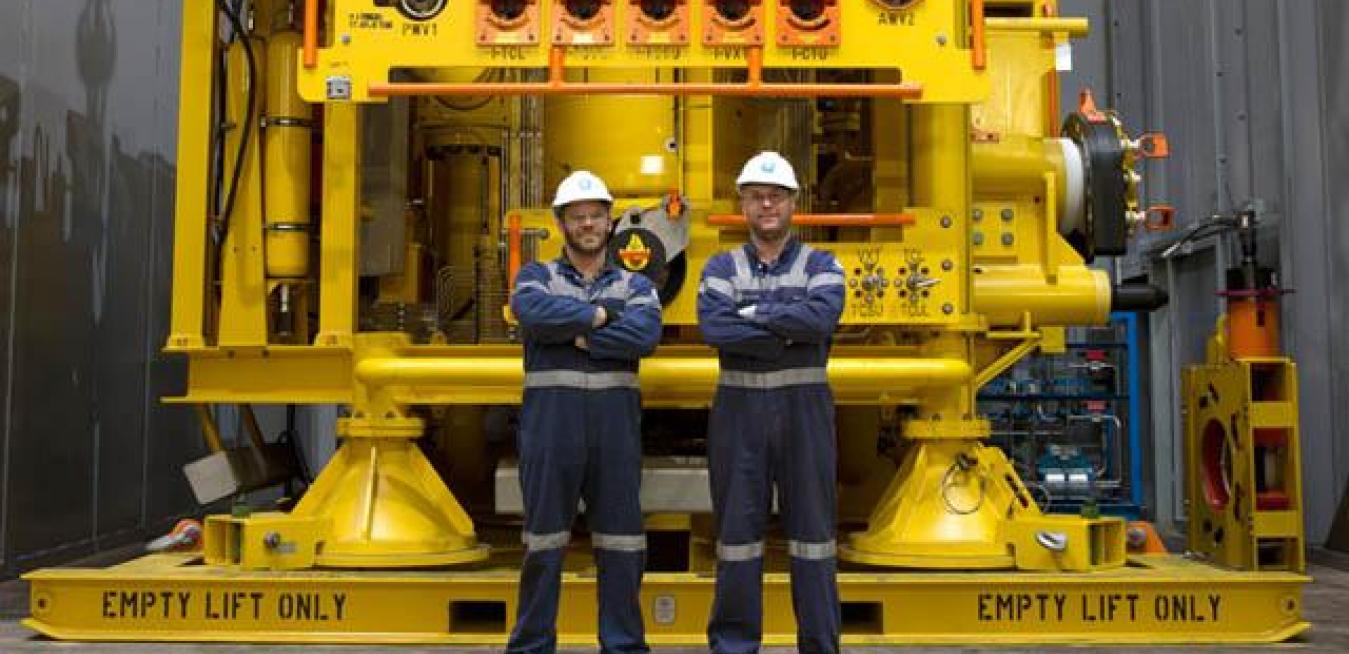They’re called “Christmas trees,” but unlike their namesakes they’re not green and they’re definitely not alive.
Sitting on the ocean floor off the north west coast of Western Australia, the yellow subsea machines are tasked with controlling the flow of oil and gas from undersea wells.
Their nickname comes from the variety of valves, spools, fittings and hardware that make up each device and in some configurations provide a crude resemblance to a decorated tree.
However, it’s a complex machine that requires serious engineering to withstand at least 20 years working in a tough environment.
The outside casings and structure are extremely strong, while inside it contains extraordinarily detailed components. The tolerance, or deviation in size, allowed within some valves is just zero to plus two millionths of a metre.
Before this remarkable machinery can get to work it has to first prove its mettle on dry land.
A series of rigorous tests are conducted to make sure each tree can perform amidst the harsh ocean conditions.
Each machine is placed into specially built testing bunkers at GE’s Jandakot facility in Western Australia. Each bunker measures 6.5 metres wide and deep, and 6 metres high, and the testing process within each bunker is designed to mimic the intense operational pressures the Christmas trees will experience in the open ocean.
"We test them up to operational pressures of 15,000 PSI," explained GE workshop technician Martin Birse. That’s 500 times greater than a car tyre, or 1,020 times greater than the pressure of air at sea level.
A separate testing pit measuring 9 metres wide, high and deep is filled with water and the Christmas trees lowered in for gas testing using nitrogen.
GE’s Workshop Lead for Undersea, Graham Stewart, said the Jandakot workshop accommodates up to eight trees at a time. Cranes capable of lifting 100 tonnes are used to move the Christmas trees, which can vary in weight up to 81 tonnes.
In addition to pressure testing, the Christmas trees are checked after a sea voyage from assembly lines in either Singapore or the United Kingdom – a journey that can take up to two months.
"We have to prove it hasn't been damaged in transit," said Mr Stewart.
Each tree is also customised to suit the depth, water pressure and contours of the floor at the site of each an individual well. "From the outside, the trees look similar, but they can be very different on the inside," Mr Birse said.
The customisation process and intensive testing is driven by another imperative. Once the Christmas tree settles on the ocean floor, it must keep working flawlessly.
"Once they're in place, you don't want to have to bring them back to the surface for repair," said Mr Birse.





